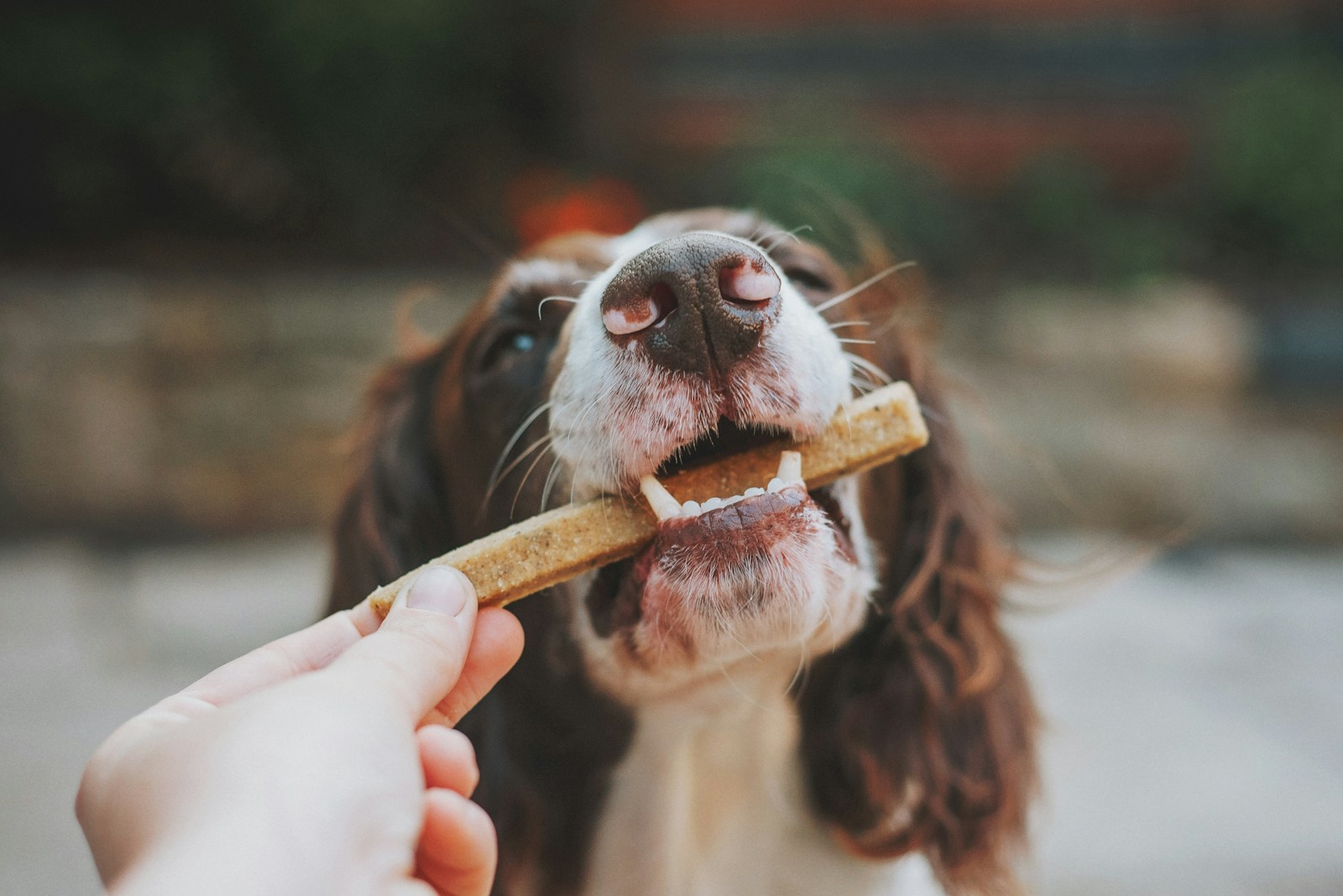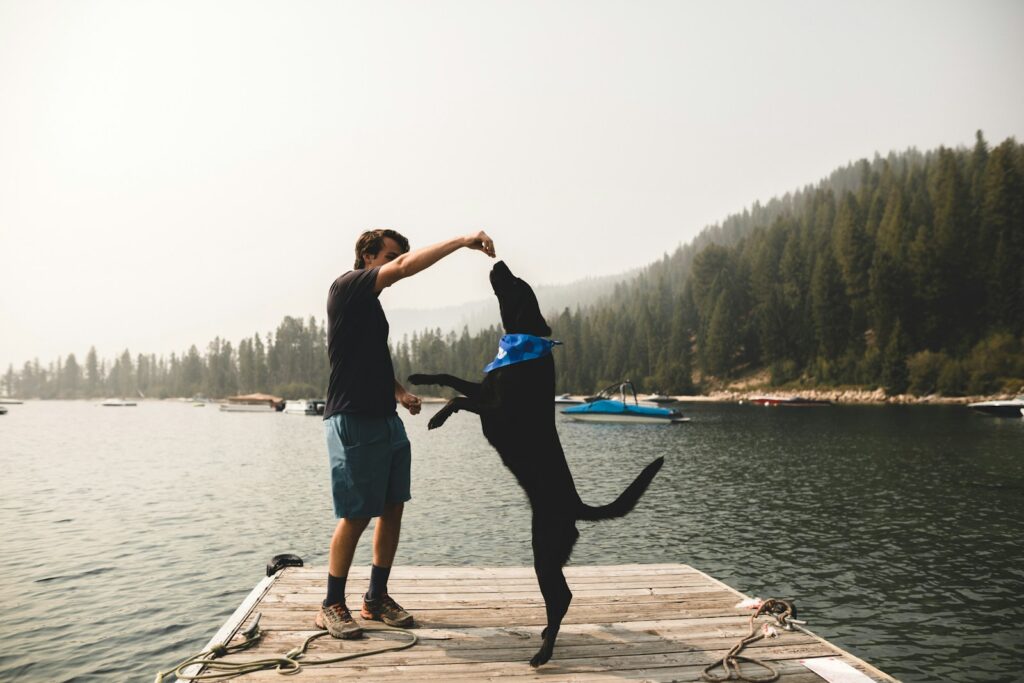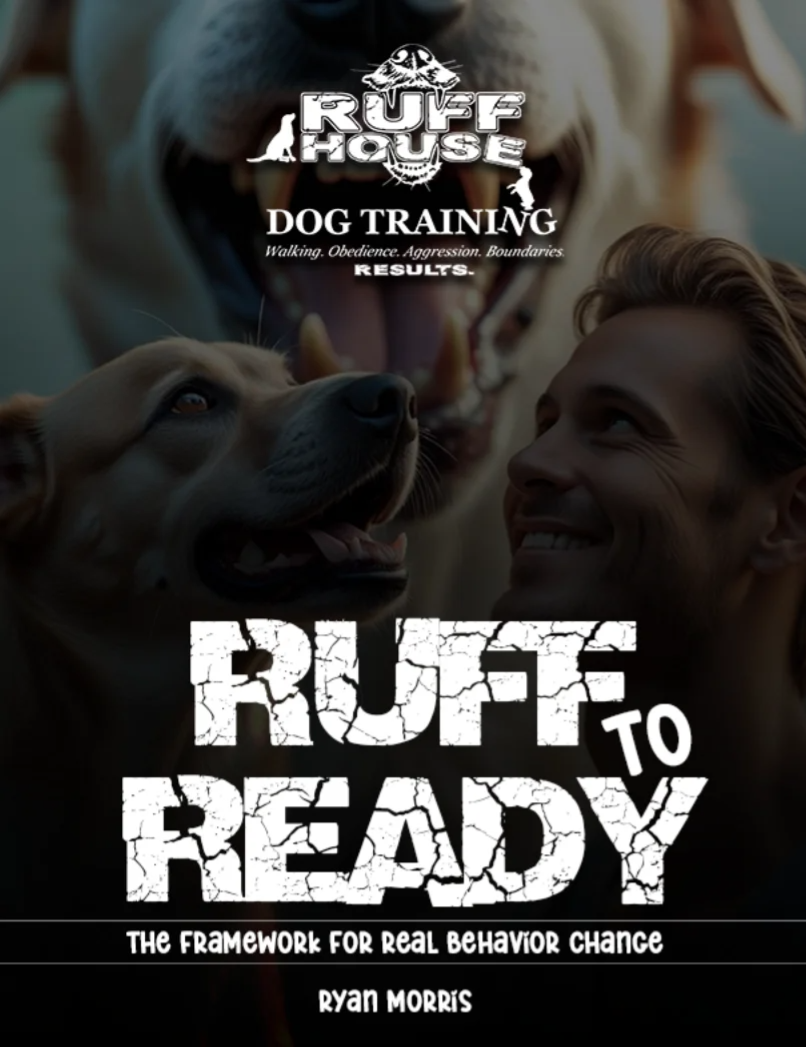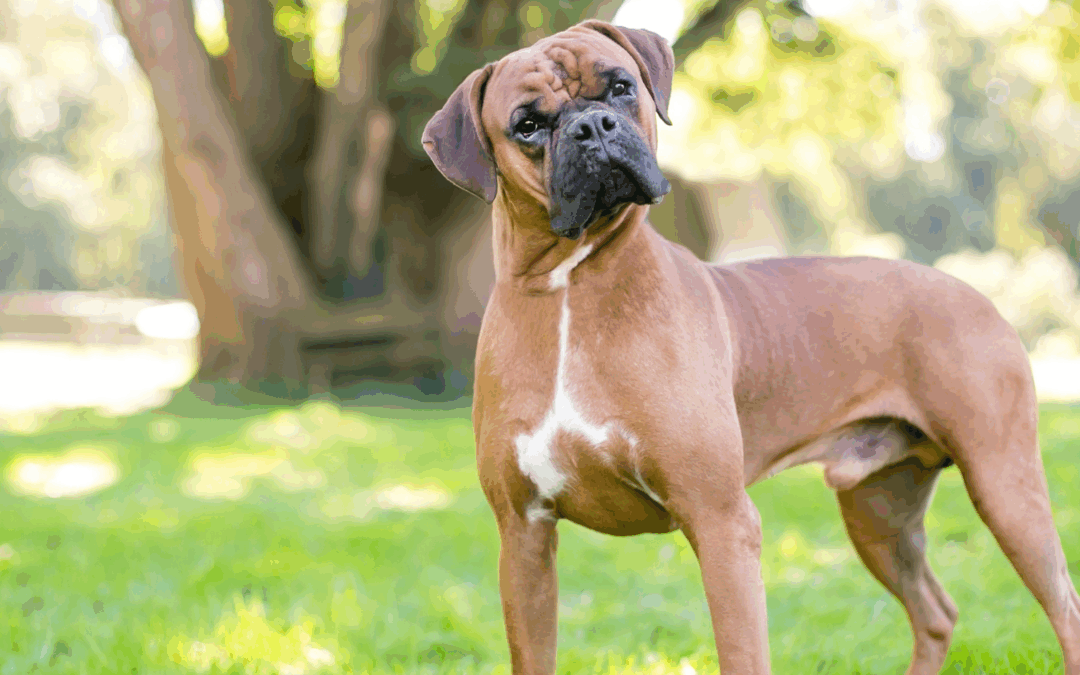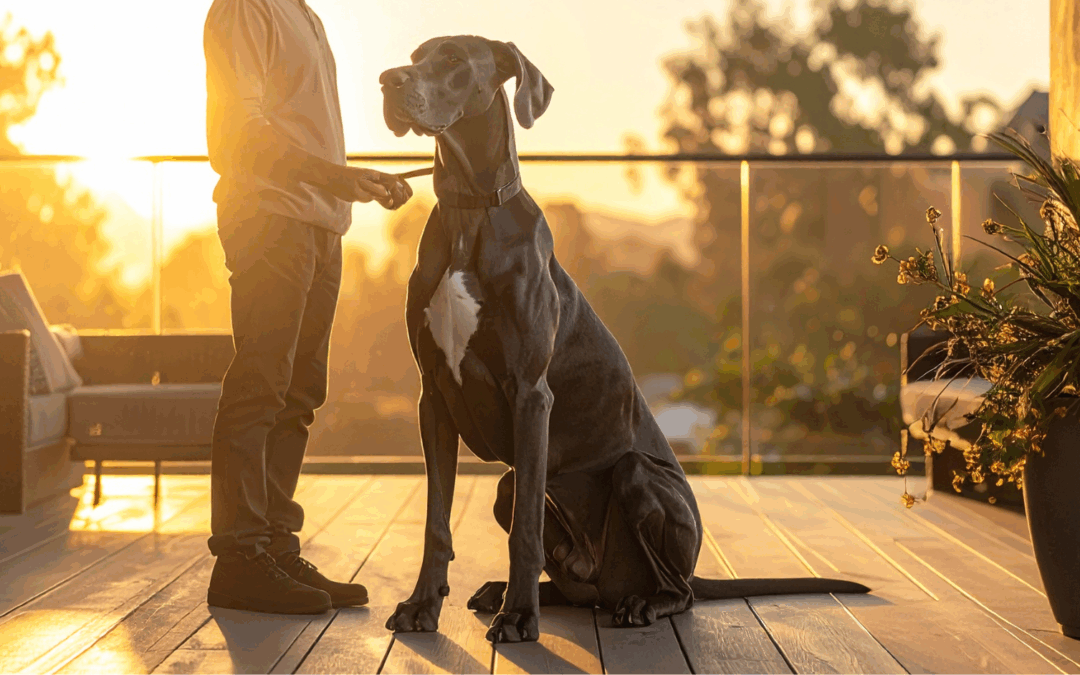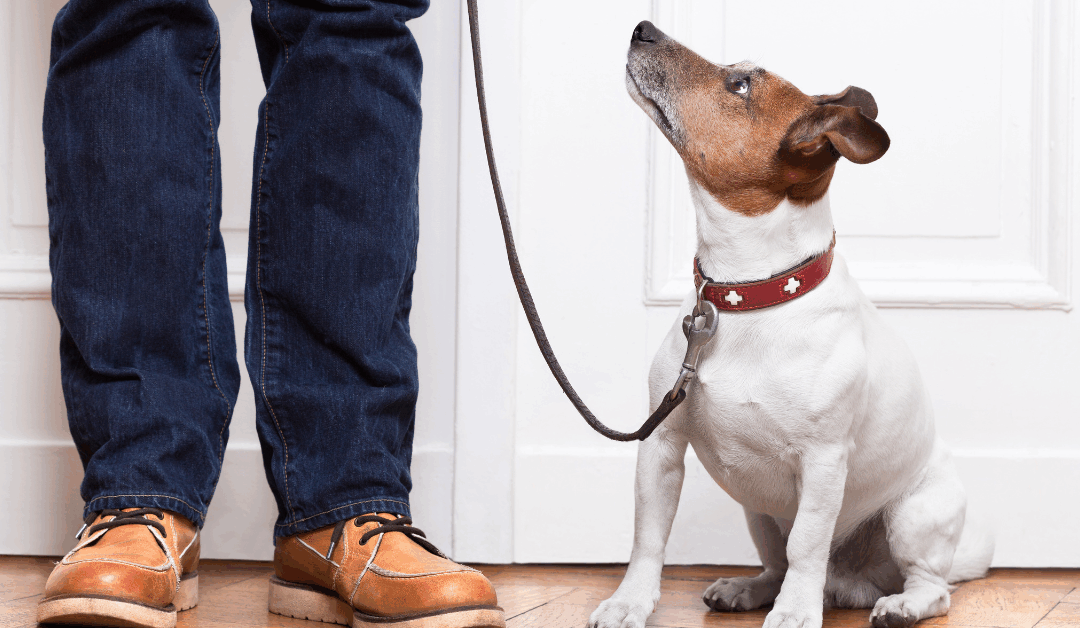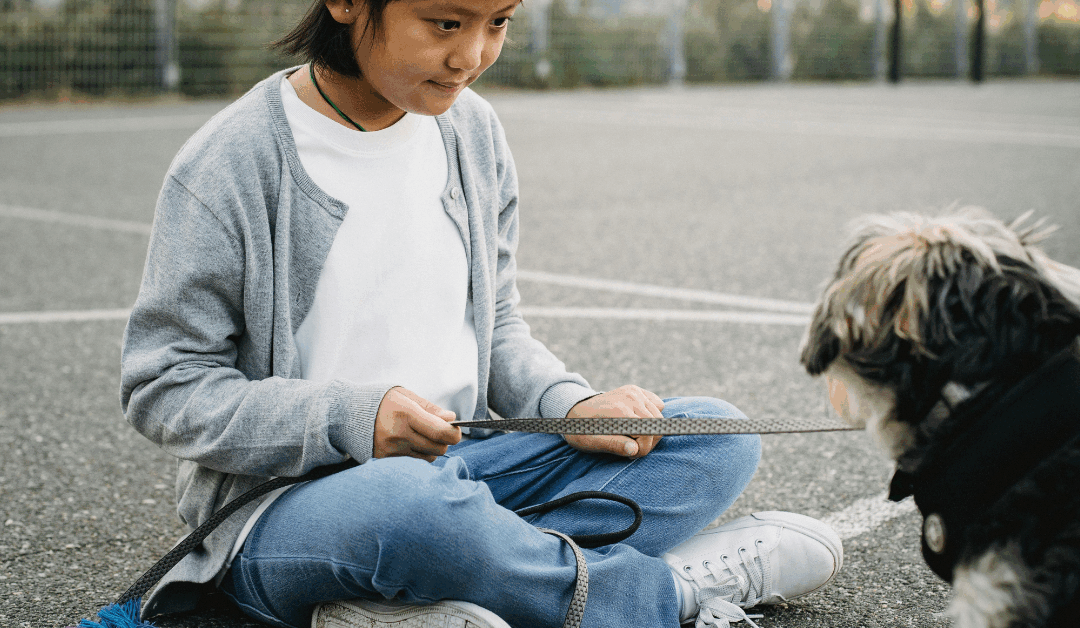Training your dog can feel overwhelming when you’re standing in the pet store aisle, staring at dozens of treat options. Should you grab the soft chewy ones, the crunchy biscuits, or those expensive freeze-dried options? The truth is, the right training treats can make or break your dog’s learning experience.
Effective dog training relies heavily on positive and negative reinforcement, and treats serve as one of the most powerful motivators for food-motivated dogs. But not all treats are created equal. The best training treats share specific characteristics that help your dog learn faster and stay engaged during training sessions. From bite-sized portions that won’t fill up your pup to high-value rewards that capture their attention, choosing the right treats requires understanding what makes them effective.
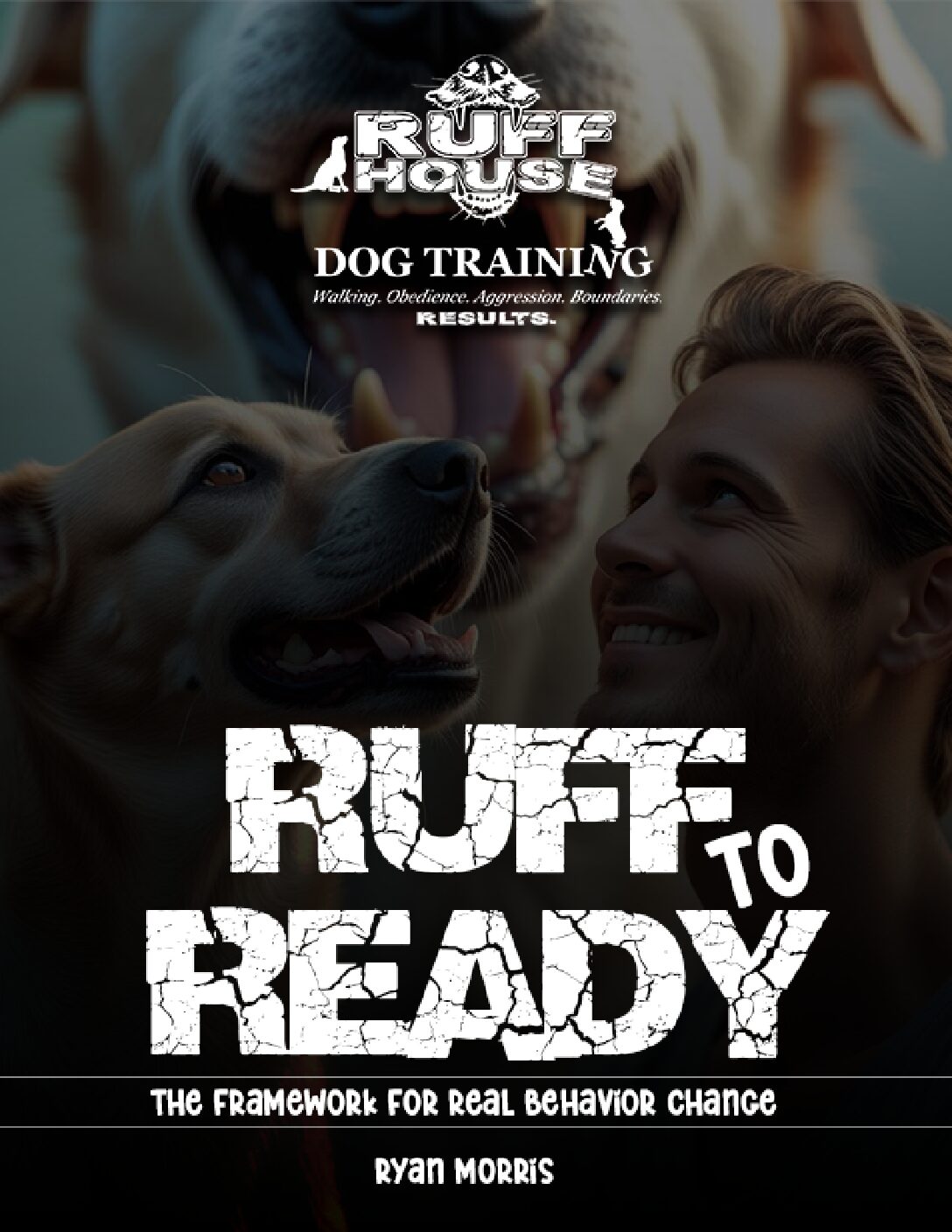
Unlock Real Behavior Change – Download Your Free Guide Now
"*" indicates required fields
This comprehensive guide will walk you through everything you need to know about selecting, using, and managing dog training treats. You’ll discover which types work best for different training scenarios, how to manage calories without compromising your dog’s health, and practical tips for getting the most out of every training session.
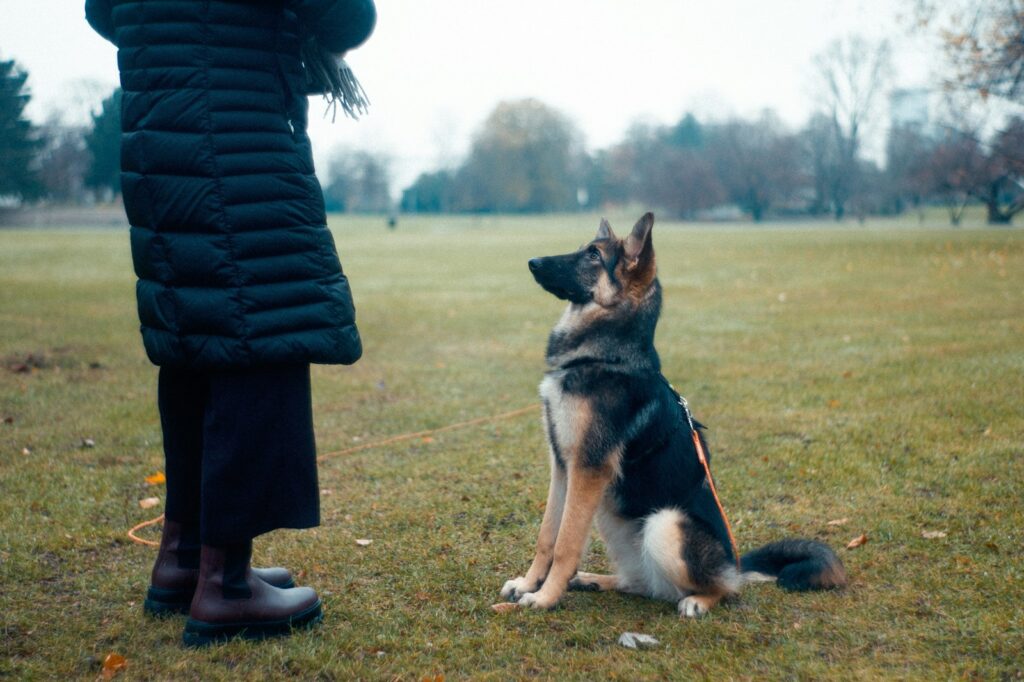
Photo by John Tuesday on Unsplash
Understanding High Value Treats vs. Regular Rewards
High-value treats are the secret weapon of successful dog training. These special rewards capture your dog’s attention and create more of an incentive to do what you ask. This will motivate them to repeat good behavior consistently.
What Makes a Treat High Value
High-value treats typically have a strong smell, irresistible taste, and soft texture that dogs can eat quickly. Popular options include small pieces of chicken, cheese cubes, or commercial treats made with real meat like beef or bacon. The key is finding what your individual dog finds most exciting. I’ve had much success with Lamb Lung treats. Dogs love it!
For many dogs, their regular kibble won’t cut it as a training reward. While kibble works fine for basic commands at home, high value treats become essential when teaching new behaviors, working in distracting environments, or training particularly challenging commands.
Matching Treats to Training Goals
Different training scenarios call for different reward levels. Teaching basic commands like sitting might work fine with standard dog treats, while recall training or crate training often requires those special high-value options. Professional trainers frequently use a hierarchy of rewards, saving the most exciting treats for the most important behaviors. I typically use them when the dog is doing something complex that involves a few steps, like the “place” command.
Consider your training environment too. Indoor sessions in a quiet room allow for lower value treats, while outdoor training with distractions demands more motivating options. Always bring your best treats when training in new locations or around other dogs.
Note from the Trainer
Be careful not to make the “high value” treat equivalent to the lower value treat. Think of asking your partner to do something that they don’t want to do, and you offer them a bag of chips. The likelihood of them performing that task is very low. But if you tell them you’ll make their favorite meal, they’re likely performing the task even before you finish asking. Their favorite meal is not something they have on a frequent basis, which makes it special and increases the incentive for them performing.
It’s the same for the dog. Good behavior alone won’t do it. They should perform something “special” to be able to get their “filet mignon” style treat. It’s very infrequent, which keeps the value high. Not every job pays the same for us, and the same holds true for the dog.
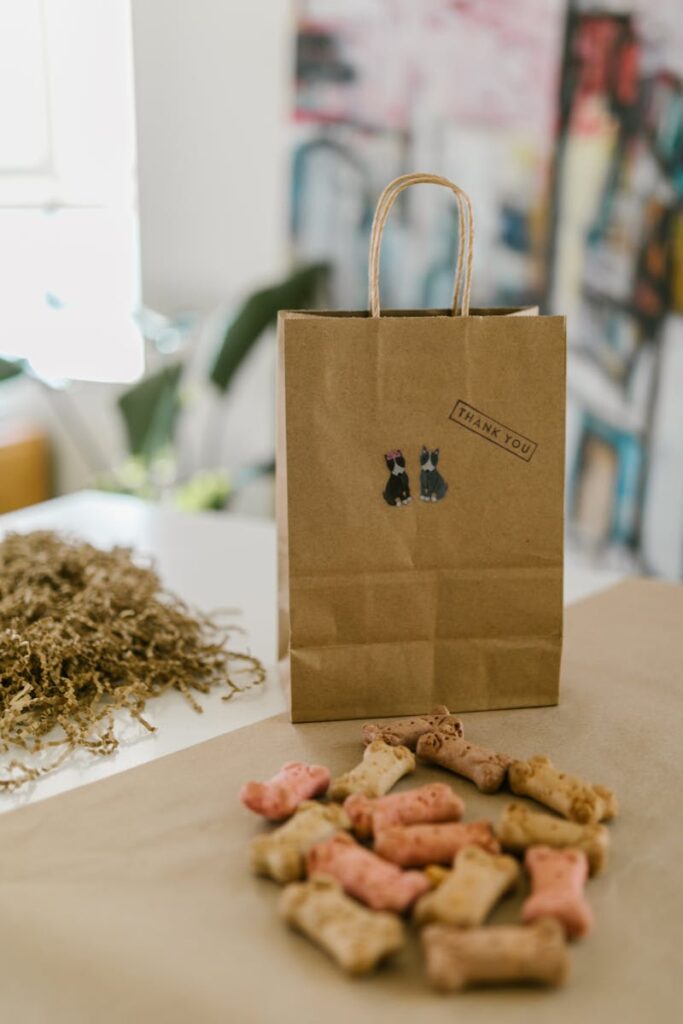
Photo by RDNE Stock project on Pexels
Soft vs. Crunchy: Texture Matters More Than You Think
The texture of your training treats significantly impacts training effectiveness, though many dog owners overlook this crucial factor.
Why Soft Treats Excel in Training
Soft treats offer several advantages during active training sessions. Dogs can eat them quickly without spending time chewing, keeping their focus on you rather than processing their reward. This quick consumption allows for rapid repetition of commands, leading to faster learning.
Soft chewy treats also break apart easily, making portion control simpler. You can quickly pinch off bite-sized pieces appropriate for your dog’s size, ensuring you’re not overfeeding during longer training sessions. Popular soft options include freeze-dried liver, soft-baked training treats, and small pieces of cooked chicken.
When Crunchy Treats Work Better
Crunchy treats have their place in dog training, particularly for specific scenarios. They work well as final rewards at the end of training sessions or when you want to give your dog a longer-lasting reward for exceptional behavior.
Some dogs actually prefer the texture and sound of crunchy treats, making them more motivating than soft options. If your dog shows strong preference for crunchy rewards, you can still use them effectively by choosing smaller sizes that don’t require extensive chewing.
Combining Textures for Maximum Impact
Smart trainers often carry both soft and crunchy options in their treat bag. Start sessions with soft treats for rapid learning, then finish with a special crunchy reward as a jackpot for excellent performance. This combination keeps training interesting while maximizing efficiency.
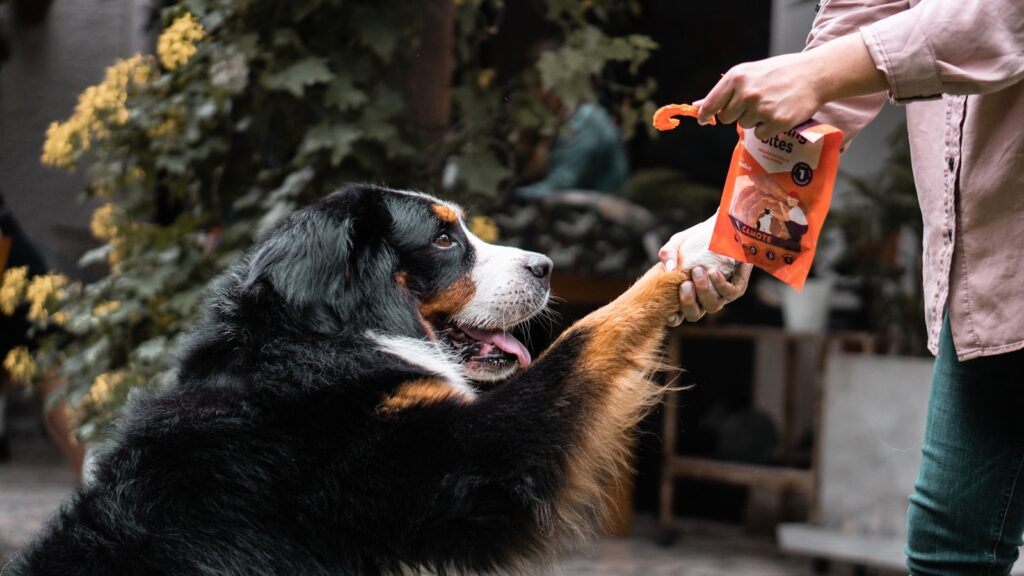
Photo by Nicole Calmet on Unsplash
Size Matters: Matching Treats to Your Dog’s Needs
Proper treat sizing affects both training effectiveness and your dog’s health, yet it’s one of the most commonly overlooked aspects of reward-based training.
Small Dogs, Tiny Treats
Small dogs require proportionally smaller treats to avoid overfeeding. A treat that’s perfect for a Golden Retriever could constitute a full meal for a Chihuahua. Look for training treats specifically designed for small breeds, or break larger treats into appropriate portions.
Many commercial training treats come in multiple sizes, making it easier to find options suitable for your pup’s size. When in doubt, aim for treats roughly the size of your dog’s regular kibble pieces.
Large Dogs and Portion Control
Large dogs might seem like they can handle any treat size, but smaller portions actually work better for training. Bite-sized pieces keep big dogs focused on learning rather than chewing, plus they help manage calorie intake during longer sessions.
Consider breaking larger treats in half or choosing training treats designed for quick consumption. Your dog will appreciate the reward regardless of size, and you’ll maintain better control over their daily caloric intake.
The Bite-Sized Sweet Spot
Regardless of your dog’s size, bite-sized treats typically work best for active training. They’re consumed quickly, allowing immediate repetition of the next command or behavior. This rapid reward cycle accelerates learning and keeps dogs engaged throughout the session.
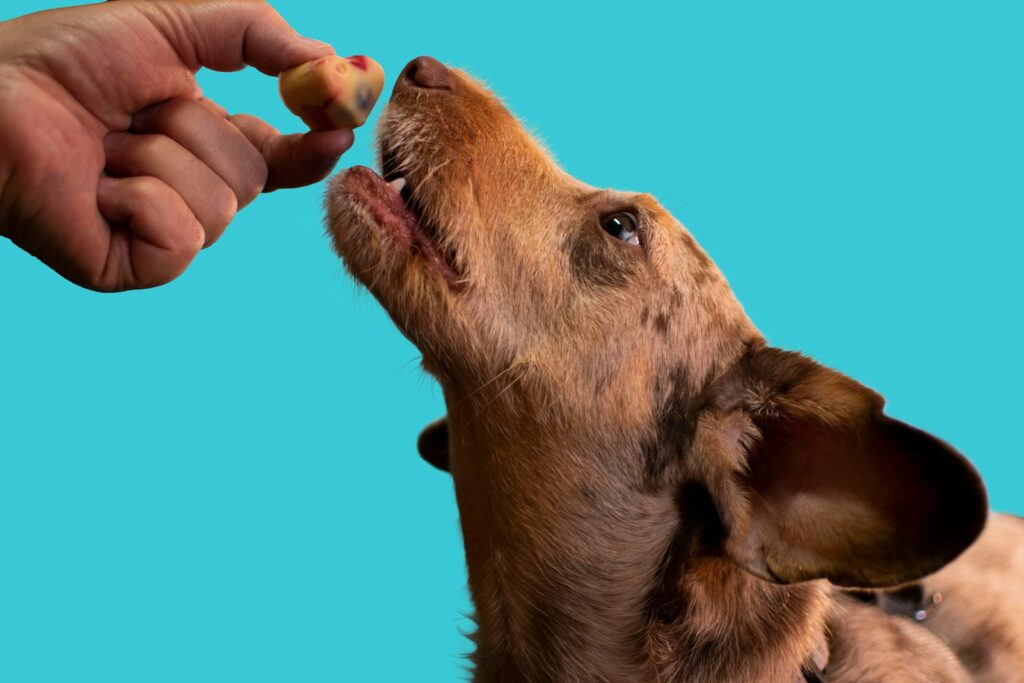
Photo by Gabriella Louw on Unsplash
Managing Your Dog’s Total Daily Calories
Training treats can quickly add up to significant calories, potentially leading to weight gain if not properly managed alongside your dog’s regular meals.
The 10% Rule
Veterinarians typically recommend that treats comprise no more than 10% of your dog’s total daily calories. This leaves 90% for their nutritionally complete dog food, ensuring they receive proper nutrition while still enjoying training rewards.
To implement this rule, calculate your dog’s daily caloric needs based on their weight, age, and activity level. Then determine how many calories you can allocate to treats during training sessions. This might mean reducing their regular kibble portions on heavy training days.
Healthy Training Treat Options
Not all treats are nutritionally equal. Look for options made with real meat as the first ingredient, minimal artificial additives, and appropriate protein levels for your dog’s life stage. Many healthy training treats double as nutritious snacks between meals.
Consider natural options like small pieces of cooked chicken breast, freeze-dried liver, or commercial treats with simple ingredient lists. These choices provide nutritional value beyond just calories, supporting your dog’s overall health.
Balancing Training and Nutrition
On days with intensive training sessions, you might need to reduce your dog’s regular meals to compensate for extra treat calories. Some trainers use part of the dog’s daily kibble allocation as training rewards, especially for less challenging commands.
Keep a training journal noting treat quantities used in each session. This helps you track caloric intake and adjust meal portions accordingly. Your dog’s waistline will thank you for this attention to detail.
Building Your Training Treat Arsenal
Successful dog training often requires a variety of treats to maintain motivation and match different training scenarios.
Essential Treat Categories
Stock your treat bag with at least three different value levels. Low-value treats work for easy commands in familiar environments. Medium-value options handle moderately challenging training or mildly distracting situations. High-value treats tackle difficult behaviors, new environments, or particularly exciting distractions.
Consider including both commercial treats and natural options in your arsenal. Commercial training treats offer convenience and consistency, while natural options like cheese or chicken provide variety and often higher motivation.
Treat Storage and Freshness
Keep treats fresh by storing them in airtight containers and rotating stock regularly. Stale treats lose their appeal quickly, reducing their effectiveness as motivators. Many trainers use small containers or bags that attach to their belt for easy access during sessions.
Consider the shelf life of different treat types. Freeze-dried options last longer than soft-baked treats, while fresh options like cheese or chicken require refrigeration and have shorter usage windows.
Special Situation Treats
Some training scenarios demand special treat considerations. Recall training benefits from exceptionally high-value rewards like real meat or cheese. Crate training might work better with longer-lasting options that provide comfort. Puppy training requires softer textures appropriate for developing teeth.
Keep special occasion treats separate from regular training rewards. This maintains their high value and prevents your dog from becoming bored with them through overexposure.
Top Dog Training Treats
When it comes to training your puppy, having the right treats can make all the difference. Here’s a list of some highly-recommended training treats, along with trusted brands and links to where you can purchase them:
- Zuke’s Mini Naturals: These small, soft treats are perfect for training sessions, as they’re easy to chew and come in a variety of flavors like chicken and peanut butter. Buy Zuke’s Mini Naturals here
- Wellness Soft Puppy Bites: Specifically designed for puppies, these soft treats are packed with delicious flavors like lamb and salmon, making them an excellent high-value option. Buy Wellness Soft Puppy Bites here
- Blue Buffalo Blue Bits: Made with real meat as the first ingredient, these soft-moist treats are fortified with DHA for healthy brain development, ideal for growing puppies. Buy Blue Buffalo Blue Bits here
- Bil-Jac Little Jacs Small Dog Training Treats: These soft, bite-sized treats are made with fresh chicken liver and come in a resealable bag for maximum convenience. Buy Bil-Jac Little Jacs here
- Natural Balance Mini Rewards: At only five calories per treat, these small, tasty bites are made with quality ingredients like chicken, duck, or salmon, perfect for training sessions. Buy Natural Balance Mini Rewards here
- Rocco & Roxie Gourmet Jerky Sticks: Although pricier, these jerky sticks are popular for their high-quality ingredients and great flavor. You can easily break them into smaller pieces for training purposes. Buy Rocco & Roxie Gourmet Jerky Sticks here
By trying out these top treats, you’re sure to find one that your puppy loves, helping make training a rewarding experience for both of you.
Training Techniques That Maximize Treat Effectiveness
How you deliver treats matters as much as which treats you choose. Proper timing, placement, and variety keep dogs engaged and accelerate learning.
Timing Is Everything
Deliver treats within seconds of the desired behavior to create clear associations. This immediate reinforcement helps dogs understand exactly which action earned the reward. Delayed rewards confuse the learning process and slow progress.
Practice your treat delivery technique until it becomes automatic. Fumbling with treat bags or struggling to break treats into appropriate sizes disrupts training flow and reduces effectiveness.
The Magic of Variable Reinforcement
Once your dog reliably performs a behavior, switch from rewarding every repetition to intermittent reinforcement. This technique actually strengthens learned behaviors while reducing treat dependency.
Start by rewarding every other repetition, then gradually reduce frequency while maintaining enthusiasm and praise. This approach creates more durable learning while managing calorie intake.
Beyond Food Rewards
While treats are powerful motivators, the most effective training incorporates other rewards too. Praise, petting, play, and access to favorite activities can supplement or even replace food rewards for some behaviors.
Pay attention to what motivates your individual dog beyond food. Some dogs work enthusiastically for a favorite toy, while others respond strongly to verbal praise or physical affection. Incorporating these preferences creates more well-rounded training.

Troubleshooting Common Training Treat Challenges
Even experienced dog owners encounter treat-related training obstacles. Understanding common issues and their solutions keeps training sessions productive.
When Dogs Lose Interest
If your dog stops responding to previously effective treats, they might be experiencing treat fatigue. Rotate your treat selection regularly to maintain novelty and interest. What excited your dog last week might feel boring today.
Consider whether your dog is genuinely full or simply bored with the current options. Reducing treat size or switching to different flavors often reignites enthusiasm without overfeeding.
Managing Food-Motivated vs. Less Food-Motivated Dogs
Highly food-motivated dogs present different challenges than those less interested in treats. Food-motivated dogs might become overly excited or pushy around treats, requiring management of their enthusiasm alongside basic training.
For less food-motivated dogs, experiment with different treat types, textures, and flavors. Some dogs prefer freeze-dried options, while others respond better to fresh meat or cheese. Don’t give up—almost every dog has some food that motivates them.
Dealing with Dietary Restrictions
Dogs with allergies or dietary sensitivities require special consideration in treat selection. Many commercial training treats contain common allergens like chicken, beef, or wheat.
Look for limited ingredient treats or consider making your own using safe ingredients. Sweet potato, fish, or novel proteins like venison can work well for dogs with restrictions. Always consult your veterinarian when dealing with serious allergies.
Making Training Treats Work for Every Dog
Every dog is unique, and successful training adapts to individual preferences, needs, and circumstances.
Puppy Considerations
Puppies have special treat requirements due to their developing digestive systems and smaller stomachs. Choose treats appropriate for their age, size, and dietary needs. Softer textures work better for developing teeth, while smaller portions prevent overfeeding growing dogs.
Young puppies learn quickly but have shorter attention spans. Keep training sessions brief and use especially motivating treats to maintain focus during these critical early learning periods.
Senior Dog Adaptations
Older dogs might have dental issues that affect their ability to chew certain treats. Softer options or treats that dissolve easily work better for seniors with tooth problems or sensitive mouths.
Senior dogs often benefit from lower-calorie treat options to manage weight, especially if they’re less active than in their younger years. Many commercial treats come in senior formulations with adjusted calorie and nutrient profiles.
Multi-Dog Household Management
Training multiple dogs simultaneously requires extra planning around treat distribution and management. Consider each dog’s size, dietary needs, and training level when selecting treats for group sessions.
Individual training sessions often work better than group training for treat-based learning, especially when dogs have different skill levels or dietary requirements. This allows for personalized treat selection and prevents competition between dogs.

Why Ruff House Dog Training Is the Best Choice for Your Dog
When it comes to training your dog, Ruff House Dog Training stands out as a top choice for building a stronger bond and achieving lasting results. With a team of experienced trainers, Ruff House provides personalized training solutions tailored to your dog’s unique needs and personality.
Ruff House Dog Training also emphasizes owner involvement, equipping you with the tools and knowledge to continue your pup’s progress at home. Whether you’re working on basic commands, behavioral issues, or advanced skills, their training programs are designed to deliver effective, compassionate, and practical results. Choosing Ruff House means choosing a partner dedicated to your dog’s success and overall well-being. Learn more at ruffhdt.com and take the first step toward unlocking your dog’s full potential.
Building Long-Term Training Success
Effective use of training treats extends beyond individual sessions to create lasting behavioral changes and stronger bonds between dogs and their owners.
The journey of dog training is much like building a relationship—it requires consistency, patience, and the right tools. Training treats serve as one of your most valuable tools, but their effectiveness depends on thoughtful selection and strategic use.
Remember that the goal isn’t to create treat dependency but to establish clear communication and mutual understanding with your dog. As behaviors become reliable, you’ll gradually reduce treat frequency while maintaining the strong foundation you’ve built together.
Start implementing these treat strategies in your next training session. Pay attention to your dog’s preferences, monitor their response to different options, and adjust your approach based on what you observe. The perfect training treat for your dog might be different from what works for others, and that’s perfectly normal.
Your dog’s training journey is unique, and the treats that fuel their learning should be chosen with the same care and attention you give to other aspects of their wellbeing. With the right treats and techniques, you’ll find that training becomes not just more effective, but more enjoyable for both you and your canine companion.
